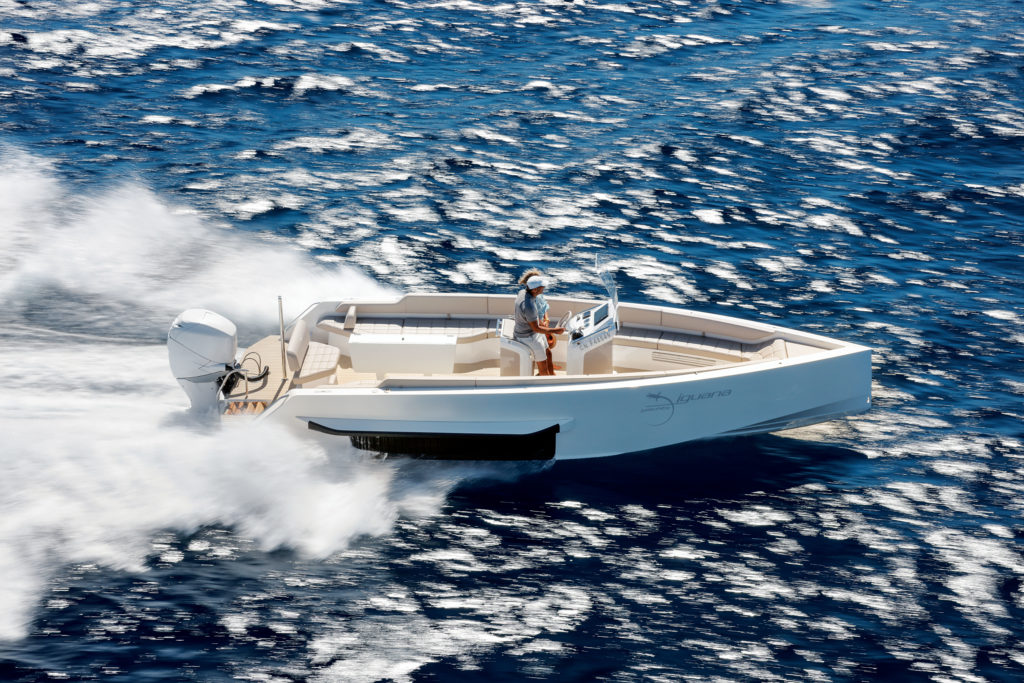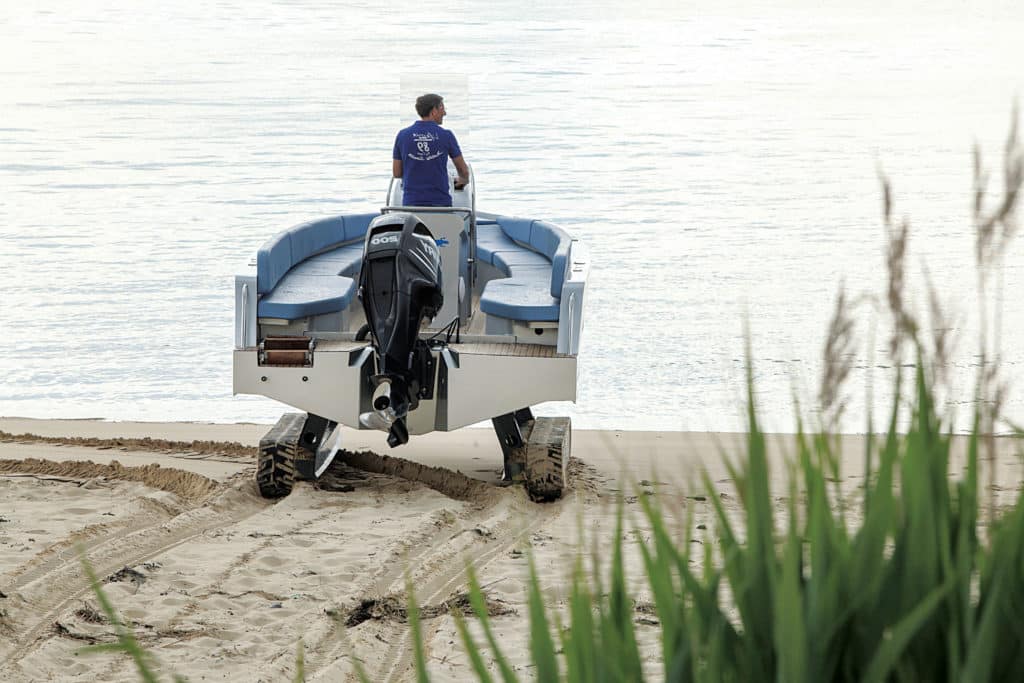
The E-Iguana 29 is a chameleon: able to run 40 knots on the water and then transition into a land vehicle with tank-like tracks that drop from the hull. Iguana uses two propulsion systems to achieve this shape-shifting: a 300 hp outboard for the carbon-fiber planing hull and three electric motors to run the lower landing gear. Battery cells power the electric motors.

“These battery cells have a patented casing that is flushed with liquid,” says Florent de Labarre, Iguana’s chief engineer. “With a heat pump, the battery can be heated or cooled efficiently. That increases its range and service life. Before this, the use of electric drive systems was unimaginable because it was so unsafe.”
The battery packs provide 110 hours (or an estimated 10 days) of use, and the three-phase electric engines are rated at 30 hp each. Like a real-life iguana, the 29-footer moves faster in water than the 4.5 mph it does on land.
The E-Iguana 29 might have specialized applications, but it’s the coolest-looking amphibious boat on the water. Battery power makes it the greenest.








